
Imagine this: an eager shopper browses your well-crafted footwear website. A perfect pair of shoes catches their eye, and they excitedly add it to their cart.
But when they visit the physical store to try them on, they’re met with a puzzled expression from the sales associate. “Sorry, those shoes are only available online,” they say. Frustration sets in — weren’t these shoes part of the same brand? In all likelihood, you lost a potential customer.
This scenario is all too common in a world of disconnected shopping experiences. That’s where omnichannel logistics strides onto the stage.
To help you understand the ins and outs of omnichannel logistics, this article will cover its advantages, disadvantages, and best practices to help you implement it.
What is omnichannel logistics?
Omnichannel logistics refers to the integrated approach of managing and optimizing the flow of goods, information, and services across multiple sales channels and customer touchpoints.
This strategy involves synchronizing inventory, order fulfillment, and communication systems across all channels, including offline channels like physical stores, online stores, mobile apps, or other digital avenues.
The goal is simple: your customers should be able to interact with you through their preferred method while maintaining a seamless shopping experience.
Naturally, businesses with seamless omnichannel logistics see their sales go up like a rocket. When customers have the option to start shopping on their phone, continue on their computer, and maybe even pick up their order from your store nearby, they’re more likely to hit that “Buy” button.
After examining over 135,000 campaigns dispatched in 2021, comprising a staggering 610 million messages, Omnisend reveals that marketers who incorporated three or more channels within a campaign witnessed an astounding 494% surge in order rates compared to those who opted for single-channel campaigns.
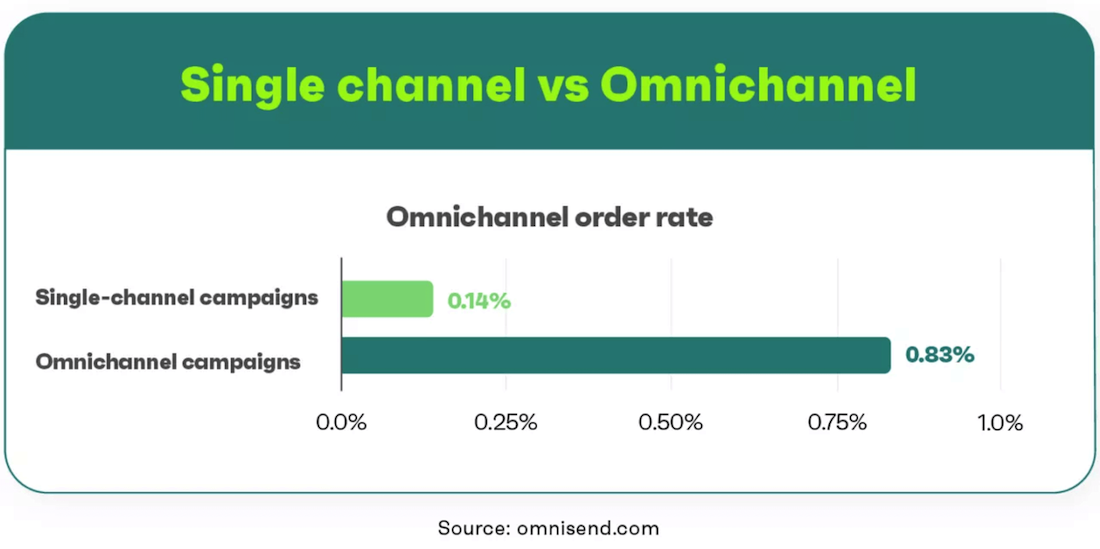
When you think of a brand leveraging omnichannel logistics, Nike might come to mind.
Here’s how Nike utilizes omnichannel logistics:
- Buy Online, Pickup In-Store (BOPIS): Customers can shop online and choose the option to pick up their orders from a nearby Nike store. It’s a win-win for Nike. Their customers get the convenience of shopping online while they get foot traffic to their physical stores.
- Ship from Store: Nike’s omnichannel strategy enables the use of retail stores as fulfillment centers. If a product is out of stock in a customer’s desired size at a distribution center, the company can ship the item directly from a local store, reducing delivery times.
- Unified Customer Profiles: Nike has invested in technology that tracks customer behavior across different touchpoints. This unified customer profile helps them tailor marketing efforts and personalize the shopping experience.
- Returns Flexibility: Customers can return online purchases to physical stores, streamlining the returns process and improving customer satisfaction.
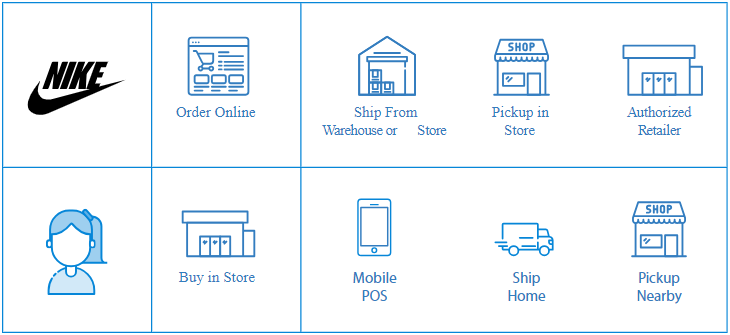
What’s the difference between multichannel and omnichannel logistics?
People often confuse omnichannel with multichannel logistics. While both strategies involve offering products and services through multiple channels, the similarities end there.
Unlike omnichannel logistics operations, channels in multichannel logistics operate independently of each other. Each channel often has its own inventory, order fulfillment process, and customer service operations, which can lead to fragmented customer experiences.
What are the benefits of omnichannel logistics?
1. Reduced delivery time
The same-day delivery market will likely hit a substantial value of 26.4 billion U.S. dollars by 2027.
Now, picture this: your customers order something today, and before they know it, their eagerly awaited package is at their doorstep (all thanks to your omnichannel operations). That’s the magic of streamlined delivery and supply chain — a hallmark of omnichannel logistics.
Streamlining your delivery processes using omnichannel logistics leads to faster order fulfillment and reduced customer delivery times.
Naturally, when your customers receive their orders faster, satisfaction soars, loyalty grows, and your brand’s reputation shines brighter.
2. Improved customer experience
Enhancing the customer journey is at the heart of omnichannel logistics. It makes shopping and customer support seamless, regardless of whether customers browse online or visit your physical store.
This consistency across channels isn’t just convenient. It also instills trust and negates the need for customers to repeat themselves.
Take a cue from Apple’s Genius Bar.
Their Genius Bar provides expert assistance both in-store and online. Chat, call, or email — they’ve got it covered.
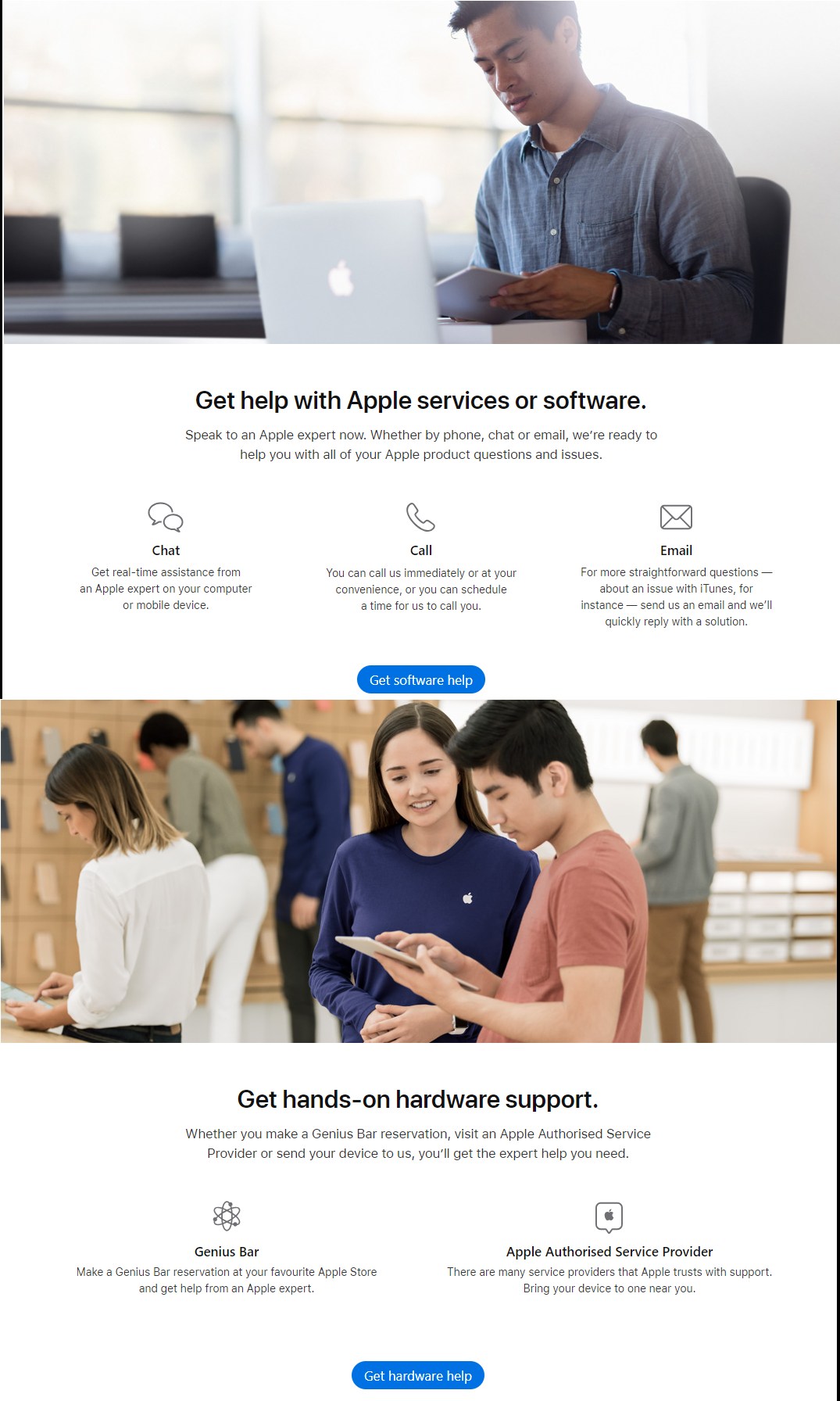
This commitment to delivering expert help regardless of the channel keeps customers smiling, solidifying Apple’s brand loyalty and sterling reputation. It’s also one factor contributing to Apple’s brand loyalty and reputation.
3. Increased sales and revenue
Abandoned carts — the bane of online retailers. But that’s where omnichannel logistics comes into the picture.
The convenience of easily transitioning between different channels and optimized delivery options minimizes cart abandonment rates.
Let’s say a potential customer is at your online store, eyeing that must-have item. Suddenly, they need to run an errand. With omnichannel logistics, they can seamlessly switch from their laptop to their phone, and voila — their cart is right there. Rather than simply abandoning their cart, they’re now likely to complete their purchase from their phone while on the go.
Customers stick around because you’re making their shopping journey easier, leading to a surge in sales and revenue.
4. Enhanced inventory management
Two major woes of businesses are disappointing customers with stockouts or overstocking — both tie up capital.
Omnichannel logistics unleashes better control over inventory through intelligent demand forecasting and optimization. When products are where they need to be, when they need to be there, customers find what they’re looking for, and you find success.
5. Competitive advantage
Now that everyone has a mobile phone and access to stores worldwide, standing out isn’t easy.
It’s not just about selling products anymore; it’s about offering an integrated journey that puts you ahead of the competition. And by helping you enhance your customer journey and delivery, omnichannel logistics enables you to do that.
What are the challenges of omnichannel logistics?
While omnichannel logistics has substantial benefits, it also has its fair share of challenges.
Here are some of the most common omnichannel logistics issues you will likely face:
1. Integrating different software systems
Omnichannel logistics involves running an e-commerce platform, managing inventory, and handling orders simultaneously. Now, imagine all these systems speaking different languages. That’s the challenge of integration.
If this communication isn’t seamless, you’ll grapple with lost orders, frustrated customers, and a tarnished reputation. Seamless integration of different software systems involved in the omnichannel marketing process is the key to ensuring every order finds its way home.
2. Data security and privacy concerns
With data flowing across multiple channels, it’s essential to safeguard customer data while ensuring compliance with data protection regulations.
A data breach will damage public trust and might even result in hefty fines and legal consequences. And not just legal tangles; you may also have to deal with public backlash.
3. Coordinating multiple channels and inventory
Omnichannel logistics means managing inventory across multiple channels and distribution points. Think online orders, in-store pickups, and maybe even some marketplace. Each channel is a different act in the entire process.
This can lead to stock imbalances and affect order fulfillment efficiency, resulting in unhappy customers.
4. Managing returns and reverse logistics
Returns will likely show up, whether you like it or not.
And when you’re using the omnichannel logistics approach, handling returns across different channels can be complex. Each channel will have its own rules, resulting in possible missteps and impacting operational efficiency and customer experience.
5. Selecting the right 3PL (third-party logistics provider)
With so many options, choosing a third-party logistics (3PL) provider that understands your omnichannel needs and efficiently manages inventory, order fulfillment, and distribution across all channels can be challenging.
An ill-fitting 3PL can lead to missed beats, delayed deliveries, and frustrated customers. It’s not just logistics; it’s your reputation that’s on the line.
As you navigate these challenges of omnichannel logistics, consider leveraging an all-in-one unified omnichannel platform like DeliverySolutions. It integrates various software systems seamlessly, enhances data security, and streamlines coordination between channels and fulfillment centers.
Best practices for successful omnichannel logistics
1. Seamless customer communication
When it comes to omnichannel logistics, one practice stands tall — seamless customer communication. Sending messages isn’t nearly enough.
When customers place orders, they want updates to flow like clockwork — whether browsing on their laptops or tapping away on their phones. This communication demands a personal touch, punctuated with real-time notifications on orders and deliveries.
Zara, a global fashion retailer, is a stellar example. They’re on point, keeping customers in the loop with real-time order status updates.
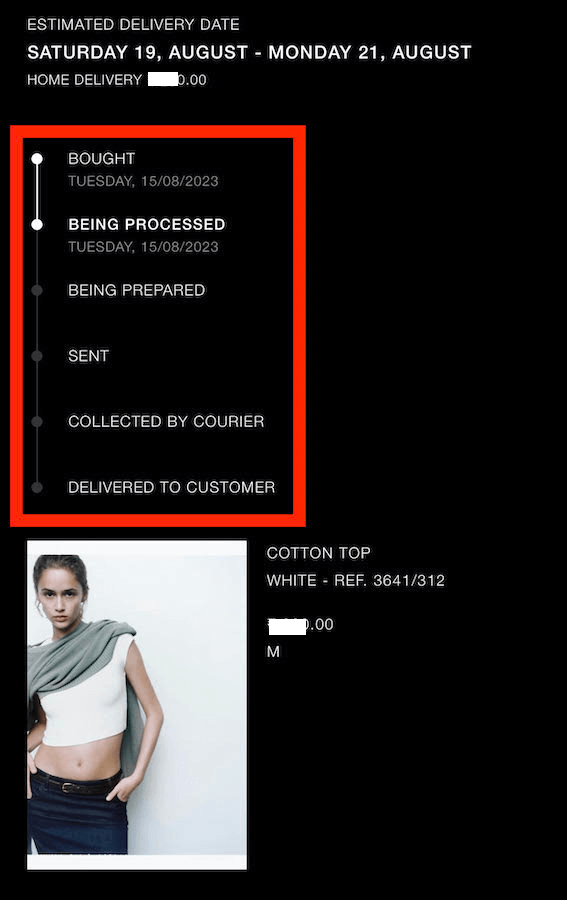
Zara also offers real-time inventory information on their app, allowing customers to check product availability across various stores.
This level of communication reassures customers, reduces anxiety, and builds trust. In a world where customers use an average of 8 channels to communicate with companies, consistent and seamless communication is now non-negotiable. Using social media is currently the most popular way to engage with customers.
2. Employee training and support
Educating staff on omnichannel processes is a cornerstone of successful omnichannel logistics. A well-trained team can help you turn challenges into positive experiences, nurturing customer loyalty.
When your team knows the ins and outs of managing multiple channels and the nuances of seamless delivery, they also become adept at customer satisfaction. They ensure that orders flow smoothly and know how to guide customers through their journey.
A knowledgeable staff is more than just an asset. It’s the primary driving force behind a seamless omnichannel experience that sets your brand apart.
3. Analyze data to personalize the omnichannel experience
Customer and market data are vital in shaping a personalized omnichannel experience that resonates with your audience. This data can work as your toolkit, allowing you to analyze consumer behavior, identify trends, and spot opportunities.
This information becomes the cornerstone of your strategy, guiding you to fine-tune inventory management and personalize customer engagement.
You can take a page out of Sephora’s playbook. Sephora analyzed data to personalize the omnichannel experience for their audience.
Imagine this: Your customers get rich in-app messages, tailored push notifications, and even book beauty sessions — all on their phones. In-store, Sephora’s crew suggests products that match their customers’ profiles. Augmented Reality helps them find items that match their unique hair and skin type.
No wonder Sephora is at the top of their game.
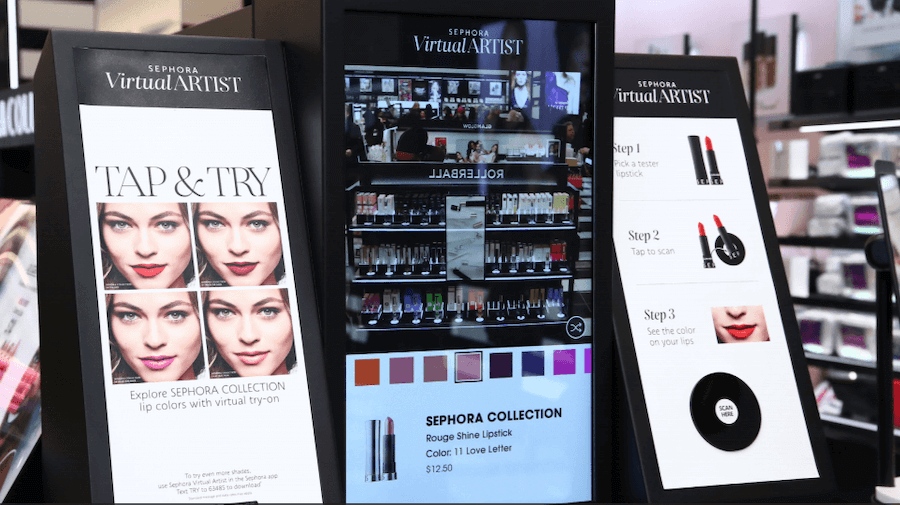
Then you have Sephora’s Beauty Insider program. They utilize unified customer data to send personalized offers to their audience across emails, the web, and mobile.
Now, here’s the data dazzle: those who visited Sephora’s site within a day of a store visit were three times more likely to buy, splurging 13% more than others. This data insight guided Sephora’s strategic investments. The result? Record sales in 2020 and grand plans for more physical stores.
Analyze customer insights and craft personalized messages, offers, and recommendations that resonate with your audience’s preferences. Remember, data isn’t just numbers — it’s the compass guiding you toward a more engaging and lucrative omnichannel journey.
4. Integrate in-store technology
When redefining the shopping experience, in-store technology emerges as the hero. Scanners and mobile apps are helping businesses bridge the gap between virtual and tangible, elevating customer satisfaction and engagement.
The best example of integrating in-store technology to provide a seamless omnichannel shopping experience would be the famous Amazon Go stores. They’ve well and truly redefined shopping.
Amazon’s in-store technology includes nifty scanners that let you pick up products and just walk out. No lines, no hassle.
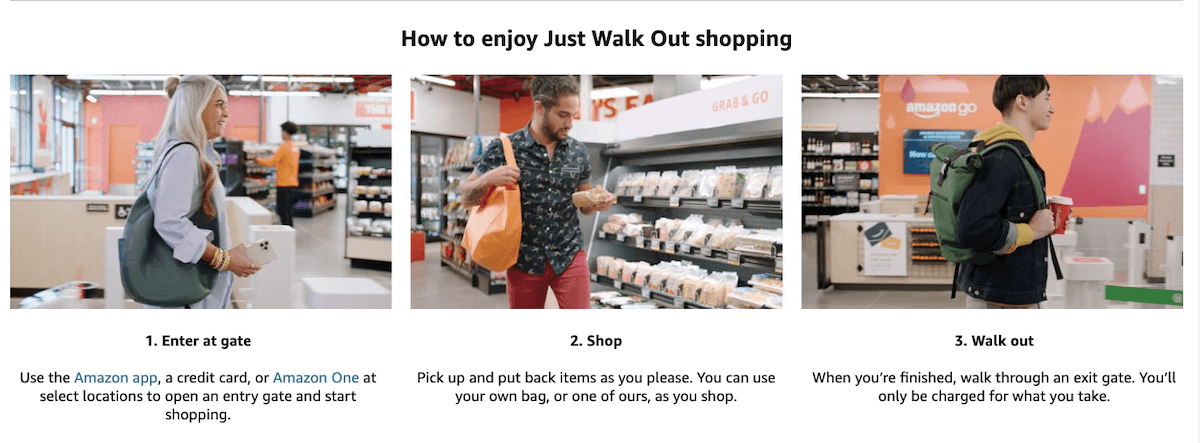
These scanners track what you take and automatically charge your Amazon account. Incorporating similar tech will not only help you exceed customer expectations, but will also give you a major competitive advantage over your competitors.
In fact, seasoned content marketer Kaleigh Moore suggests that one primary reason physical retail struggles is the lack of quick, seamless checkout solutions at brick-and-mortar stores. After all, who wants to wait in a never-ending queue?
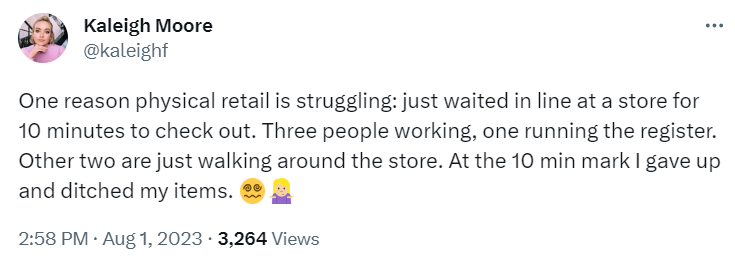
Self-checkout is the way to go if you want to avoid turning away customers due to a lack of staff or waiting in the checkout queue.
Like Amazon, you can also turn this data into super-targeted recommendations, making future shopping experiences even more tailored for your audiences.
Embrace the future with seamless omnichannel logistics
Here’s your actionable tip: Start small, but start now. Pick one best practice that resonates with your brand — enhancing customer communication, diving deep into data analytics, or integrating in-store tech.
Nailing omnichannel logistics may seem complex initially, but the benefits are numerous. You’ll get loyal customers, soaring sales, and a brand that sounds out even in a crowded market.
And when you’re ready to start your omnichannel journey, consider exploring tools like DeliverySolutions. The platform will help you sidestep major omnichannel logistics limitations, including integrating software systems, enhancing data security, and streamlining channels and fulfillment centers.
Ryan Caldarone is responsible for Delivery Solutions’ digital marketing and content strategy. He has over a decade of experience in B2B marketing, copywriting, and eCommerce operations. Before his work with technology companies, Ryan has experience in the energy sector with established international distributors, as well as SMBs He promotes value-focused storytelling to empower our enterprise customers and benefit retail consumers at large.






